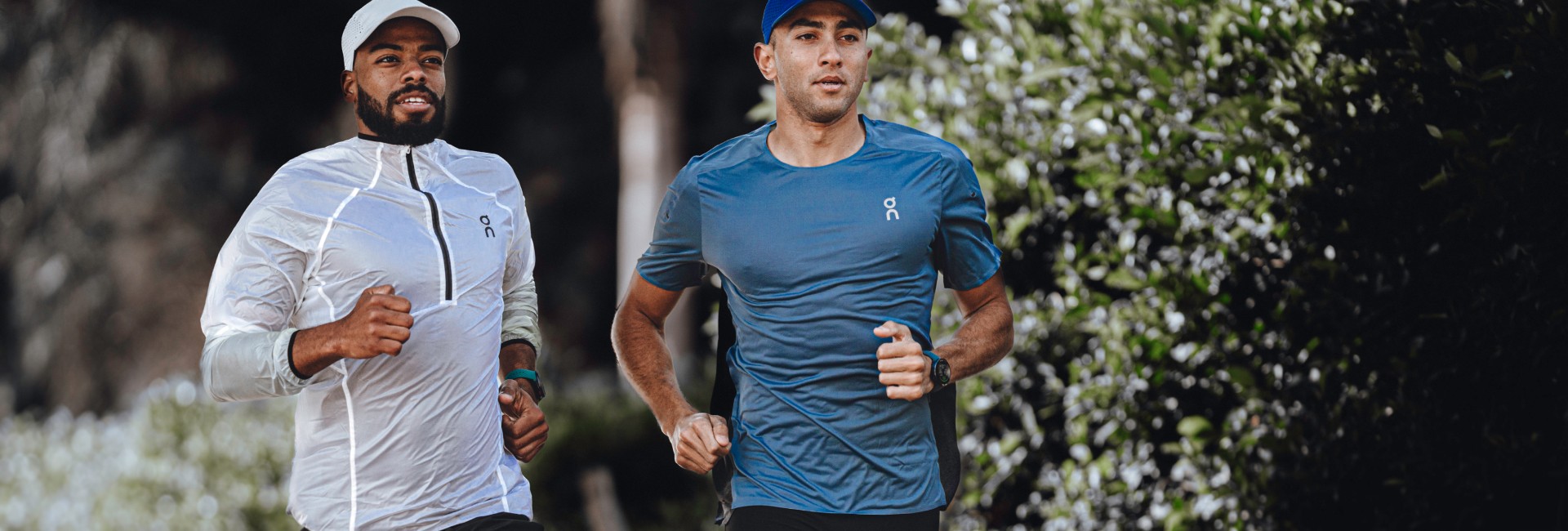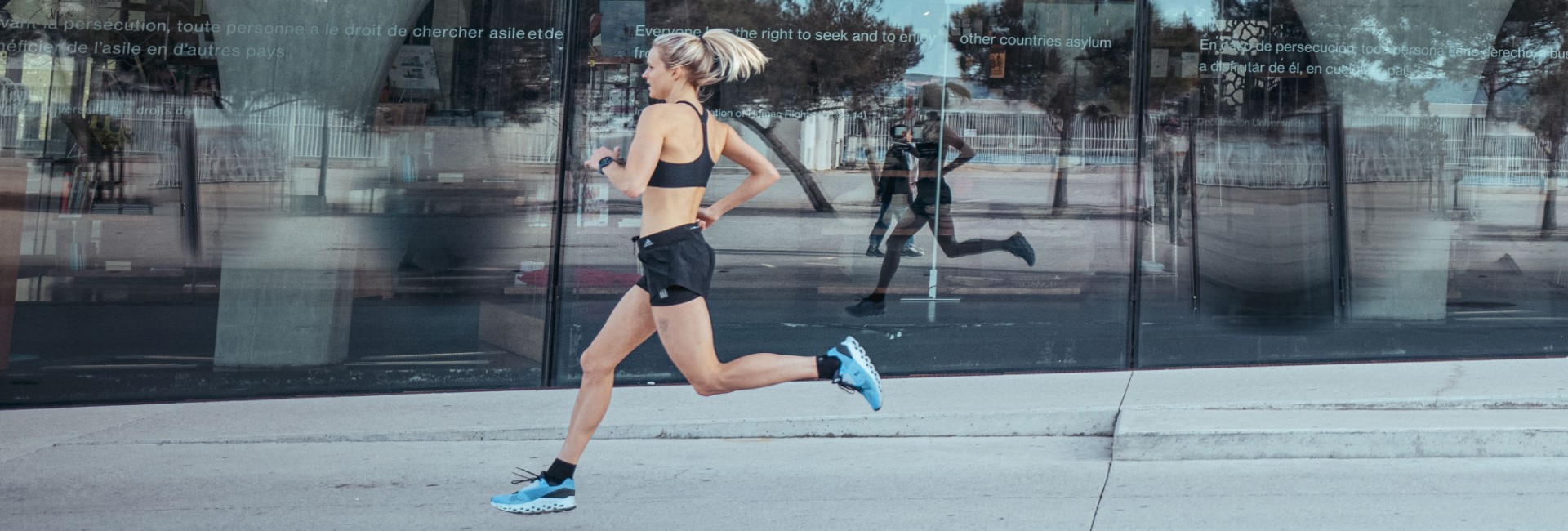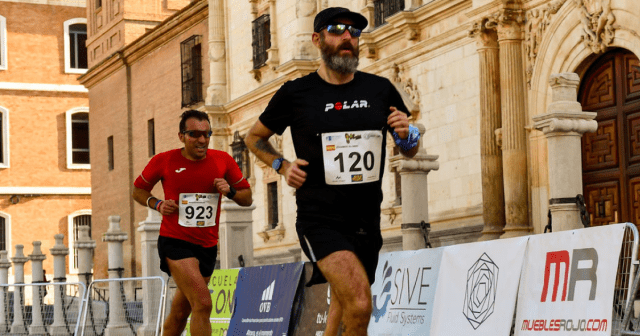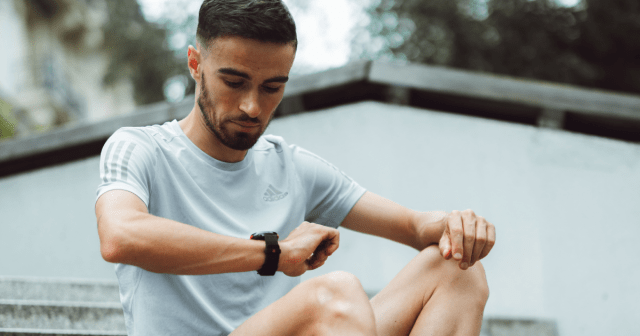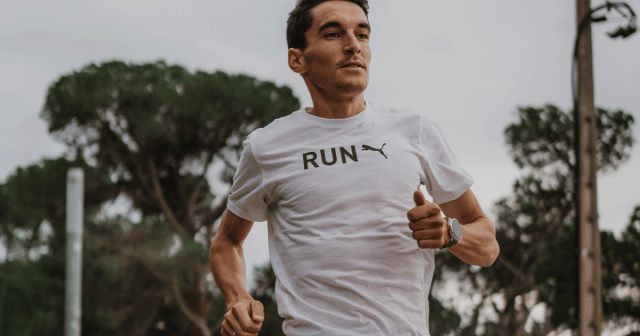If you’re ready to shake up your running routine, maybe it’s time to go in reverse. Yes, before you laugh, you may be surprised to know that running backwards has been gaining some serious attention for the benefits to your overall fitness, low impact on your knees, and potential to improve your running economy.
Also known as reverse or ‘retro-running,’ this technique is more than a fad with professional athletes turning things around for their advantage. So, how exactly do you try running backwards – and how does it help you going forwards? Here are what the studies say.
How to try running backwards (SAFELY)
Dr. Robert K Stevenson wrote a guide to Backwards Running in 1981 (which he updated in 2014), detailing the key elements to think about when attempting your first reverse run:
- Location: your ideal location will be somewhere without any obstruction, such as uneven surfaces or objects blocking your path. An open stretch of space in a park or on the beach works, as will a running track at a sports ground.
- Technique: keep your shoulders over your feet, ensuring that you don’t lean forwards or backwards with your torso as you run. Keep your arms close to your body and keep them relatively low. Push off from the balls of your feet and keep monitoring your form to ensure you don’t lift them too high.
- Observe: obviously, you need to look where you are going, so make sure you look over your shoulder frequently. On your first couple of backwards runs, you can try it with a forward-facing running partner, who can help you observe your route as you go.
Some other helpful tips include:
- Try walking backwards at first and then gradually increase your speed
- Try doing a backwards run for a short stretch as part of your regular run to get accustomed to the feeling slowly.
Can you run backwards on a treadmill?
Absolutely. That’s how the world’s fastest backwards runner, Aaron Yoder, started going in reverse. After an injury revealed that he also had arthritis in his knee, Yoder was advised to stop running or risk a knee replacement by the time he reached 30.
It’s such a different visual perspective; seeing how far I’ve gone as opposed to how far I need to go.
Aaron Yoder, the world’s fastest backwards runner
Not wanting to stop his passion for running, Yoder decided to turn around one day on the treadmill and realized that this different form didn’t place any pressure on his knee. Now head coach of Bethany College’s cross country and track teams in Lindsborg, Kansas, Yoder set broke the Guinness World Record for his one-mile runs in 2015 by completing it in 5 min 54.25 sec. He has since reported times 5 min 30 but has to make this official.
So, injuries aside, why does Yoder keep going in reverse? “When I’m running backwards, it almost feels like I’m flying because it’s such a different visual perspective; seeing how far I’ve gone as opposed to how far I need to go.”
Benefits of running backwards
In his book, Dr. Robert K Stevenson suggested that running backwards could help build stamina, improve speed and balance, increase oxygenation and strengthen leg muscles. So, what have recent studies found to support this?
Reduces impact
A 2012 study from scientists at Cardiff University found that reverse running can be used as a form of exercise for people with knee injuries, as it has a reduced amount of impact on this part of the body compared to forward running. This supported a 2011 study from the University of Milan, which found that running backwards caused the body to have a soft landing but hard takeoff – the reverse of going forwards – thus causing runners to land more lightly and with less impact on their bodies.
Burns more calories
A study from the University of Stellenbosch in South Africa in 2005 found that participants who ran backwards lost 2.5% more body fat. This result is probably explained by the above study from the University of Milan, which found reverse running required 30% more energy simply because the muscles were being forced to work in opposition to the norm.
Improves overall performance
A 2016 study from the University of Dayton found that running backwards improved athletes’ running economy, thus enhancing their ability to run forwards. Eight highly trained male runners spent ten weeks running backwards on a treadmill, and the study observed that their RE improved by 2.54% even though their VO2max or body composition remained the same.
Other potential benefits (though there aren’t studies to support them) include:
- Improved posture: running backwards is often recommended as a good way to correct your posture as it may naturally cause you to run in a more upright position.
- More stimulation: changing up your approach to running could help you feel a bit more excited about running if you’ve been finding yourself a bit bored with long runs.
- Enhanced presence: when running in reverse, you can’t let your mind drift off to what you need to add to the shopping list, for example, as you have to be extra aware of what is happening and where you are going. So, if you struggle to be in the moment, going backwards might help you practice your mindful running.
Disadvantages of running backwards
One of the obvious disadvantages of reverse running is that you may feel a little odd. Even though reverse running has featured on several trend forecasts over the past few years, most people will probably look at you a little strangely for running the ‘wrong’ way around. So, best to try this at a sports track or somewhere without the general public around if you’re concerned about what strangers think.
This relates to another disadvantage: limited location options. It is dangerous to try running backwards on a trail run or a busy street. But seriously, reverse running does have an increased potential for injury if you don’t choose a suitable location and watch where you are going.
Speaking of injuries, if you spend your entire run looking over your shoulder, you could strain your neck and shoulders. It’s best to do regular short checks and alternate sides rather than constantly turning one way. Or, as Dr. Robert K Stevenson suggests, try it with a running buddy.
Which muscles does running backwards use?
Most people feel pretty achy after their first reverse run because it uses muscles such as your calves, quadriceps, and shins in a different way to your ‘normal’ forward run.
If a runner wanted to beat their personal best, retro running could – ironically – be the way forward.
Dr. Dave Sims, Manchester Metropolitan University
According to Dr. Barry Bates at the University of Oregon, the backward motion exercises your joints differently because it emphasizes the flexion (the bending of a joint so that the bones that form that joint are pulled closer) rather than the extension (straightening of the joint). This means you could find that your hip flexors, knees, ankles, and toes could increase in flexibility. It also could be an option for stretching a pulled hamstring.
Sports scientists at Manchester Metropolitan University are currently working on understanding if this different use of muscles could help improve an athlete’s performance when they run forwards. Dr. Dave Sims observed from their studies so far that “The way in which the muscles contract when running backwards is likely to make them stronger, meaning that our muscles can cope with applying more force for longer, meaning that we could run quicker, for longer. So, if a runner wanted to beat their personal best, retro running could – ironically – be the way forward.”
Can you run a marathon backwards?
Sure. It’s not unusual to spot someone running a marathon backwards these days. In fact, Manchester Metropolitan University is currently working with Shantelle Gaston-Hird to understand why her performance has improved since including reverse running in her training. The marathon, ultra-marathon, and middle distance triathlon athlete broke the Guinness World Record for the fastest female to finish a half-marathon running backwards in October 2019 with her time of 2:16:03.
So, whether it’s a marathon, a beach jog, or a treadmill session, maybe it’s time to turn things around and gain a new perspective on your runs. Who knows, you could improve your way forwards simply by going backwards.
If you liked this post, don’t forget to share so that others can find it, too.
Or give it a thumbs up!
I like this article
Please note that the information provided in the Polar Blog articles cannot replace individual advice from health professionals. Please consult your physician before starting a new fitness program.
